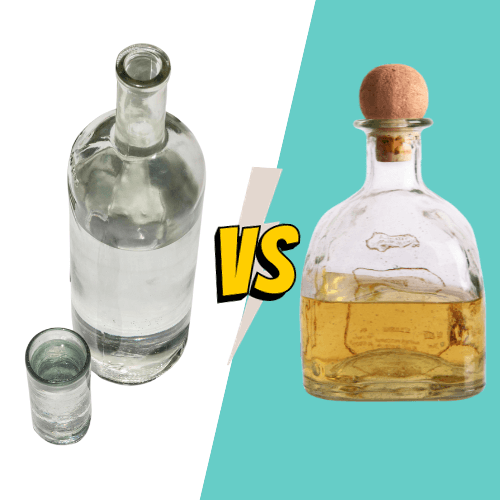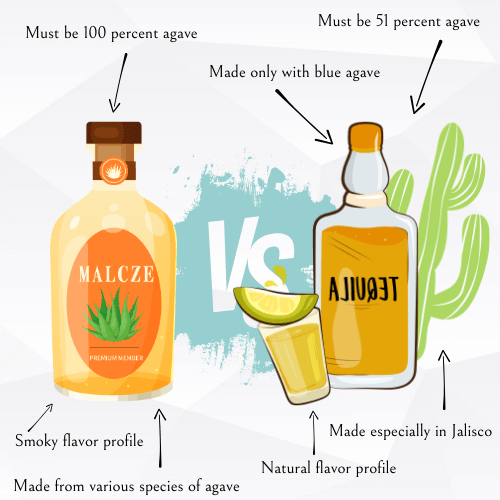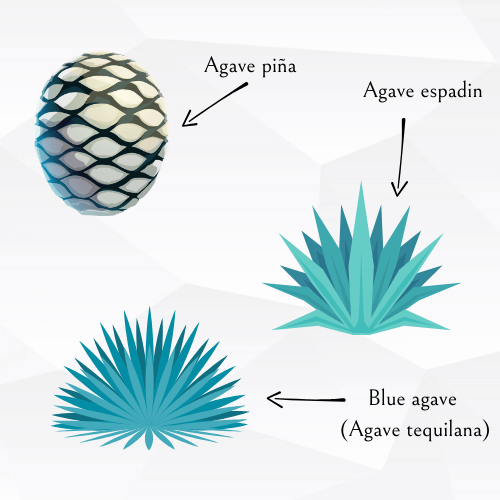Table of Contents The Left Hand Cocktail stands as a testament to the genius of Sam Ross, a visionary bartender...
Published: 12/20/23

The distinction between Mezcal and Tequila lies in their respective categorizations within the broader context of agave spirits. Notably, all Tequila is classified as Mezcal, but the reverse is not true. not all Mezcal qualifies as Tequila. This classification is grounded in the specific agave varieties employed and the distinct regulations governing their production. Mezcal, made from diverse agave types, contrasts with Tequila, which exclusively utilizes blue agave. Understanding this categorical relationship sheds light on the fundamental differences in flavor profiles and production processes that define these two quintessential Mexican spirits.
Mezcal is an ancient spirit that has deep roots in Mexican tradition, with a history dating back to pre-Columbian times. It is a distilled alcoholic beverage made from the fermented juice of agave plants, primarily the Agave angustifolia and Agave espadin varieties. The production of mezcal is a labor-intensive and artisanal process that has been passed down through generations, often involving traditional methods that connect the drink to its cultural heritage.
The production of mezcal typically begins with the harvesting of mature agave plants, which can take anywhere from 7 to 30 years to reach maturity, depending on the agave variety. The leaves are removed to reveal the piña, the heart of the agave, which is then roasted in earthen pits lined with rocks and filled with wood and charcoal. This underground roasting imparts a distinctive smoky flavor to the mezcal, a characteristic that sets it apart from tequila.
Once the piñas are cooked, they are crushed and the extracted juices are fermented with water and airborne yeasts in wooden vats or pits. The fermented liquid is then distilled in traditional clay or copper pot stills.
Tequila, like mezcal, is a distilled spirit made from the agave plant. However, tequila has a more regulated production process and is geographically constrained to specific regions in Mexico, primarily the state of Jalisco. The primary agave variety used in tequila production is the blue agave (Agave tequilana), known for its sweet and robust flavor.
Tequila production typically begins with the harvesting of blue agave, which is then trimmed to reveal the piña. Unlike mezcal, tequila piñas are usually steamed in above-ground ovens, called hornos, which impart a cleaner and less smoky flavor to the final product. After the steaming process, the piñas are crushed, and the extracted juice is fermented in stainless steel or wooden vats.
Tequila is usually distilled twice, although some premium varieties may undergo additional distillations. The final product is classified into several categories, including blanco (unaged), reposado (rested for 2-12 months in oak barrels), añejo (aged for 1-3 years), and extra añejo (aged for more than 3 years). This aging process gives tequila a smoother and more refined character, with additional flavor complexities derived from the oak barrels.

Mezcal and tequila both exhibit nuanced taste profiles that distinguish them in the world of spirits. Mezcal, often considered the older and more artisanal sibling, imparts a robust and smoky essence, a result of the traditional production method. This process imparts a distinctive earthiness, with a touch of minerality. Tequila, on the other hand, typically offers a cleaner and crisper flavor profile. The blue agave used in tequila production is often steamed rather than roasted, resulting in a milder, fruitier taste with hints of citrus, pepper, and a gentle sweetness. Tequila’s flavor spectrum can further vary based on the aging process, with blanco varieties showcasing the purest agave essence, reposado introducing subtle oak notes, and añejo boasting a complex interplay of vanilla and caramel, owing to extended barrel aging.
The agave percentage serves as a crucial distinction between mezcal and tequila, influencing both the authenticity and diversity of their flavors. Tequila, exclusively derived from blue agave, is technically only required to have a minimum of 51% agave content to bear the label of tequila. However, premium tequilas often adhere to a 100% agave standard, highlighting the purity of their composition. In contrast, all mezcal offerings must contain 100% agave, reflecting a commitment to the traditional and artisanal production methods intrinsic to this spirit. Moreover, the expansive array of over 200 agave varieties available for mezcal production, including the possibility of using multiple types in an “ensemble,” contributes to the rich tapestry of flavors in mezcal. This emphasis on agave content not only underscores the integrity of these Mexican spirits but also underscores the diverse and intricate taste profiles that enthusiasts can explore within the realms of mezcal and tequila.

While both mezcal and tequila share a common base of distilled agave juice, there can be variations in their alcohol percentages. In general, the alcohol content of mezcal and tequila falls within the standard range for distilled spirits, which is typically 40% to 55% alcohol by volume (38-55% vs. 35-55%, respectively). However, specific brands and expressions may have variations in alcohol content based on their production methods, aging processes, and regional influences.
It’s important to note that the alcohol percentage alone may not be a decisive factor in choosing between mezcal and tequila, as other factors such as flavor preferences and production methods play significant roles.
Consuming tequila and mezcal involves a diverse array of rituals, ranging from sipping neat to crafting complex cocktails. For tequila enthusiasts, the appreciation often begins with selecting a high-quality expression, such as a blanco, reposado, or añejo, each suited for different consumption styles. Neat sipping is highly recommended for premium tequilas, especially the barrel-aged añejo and extra añejo varieties, allowing the drinker to fully experience the intricate flavors developed during the aging process. It’s worth noting that tequila shots, commonly associated with the American drinking culture, are not a traditional practice in Mexico. Nevertheless, they persist, often accompanied by salt and lime, providing a zesty contrast to the spirit’s robust flavor. In the realm of cocktails, tequila takes center stage in classics like the Margarita and Paloma, where Blanco and reposado expressions shine.
Mezcal, on the other hand, has a traditional consumption style that often involves sipping it neat, allowing the drinker to savor its smoky and complex character. The presentation may include orange slices dusted with sal de gusano, a unique spice blend that enhances the overall tasting experience. Mezcal’s journey into the American cocktail scene is relatively recent, spurred by bartenders and mixologists who have embraced Mezcal’s versatility, incorporating it into classic cocktails like the Mezcal Manhattan, offering a distinctive twist. With espadín, a common and more cost-effective agave variety, mezcal cocktails are crafted to showcase its flavor integration in mixed drinks, contributing to the spirit’s growing popularity among contemporary beverage enthusiasts.
Our Team
Hi, we’re mixdrinkipedia team. Welcome to our cocktail corner of the web, crafted by our dedicated team, passionate about everything that makes mixology magical. We’re a group of enthusiasts and professionals, blending our diverse skills and backgrounds to create a space where the art of cocktails is celebrated from intricate recipes and deep dives into the history of cocktails to reviews on the latest in bar tools. Join us as we explore the art and science of mixology, one sip at a time.
Newest Recipes
Table of Contents The Left Hand Cocktail stands as a testament to the genius of Sam Ross, a visionary bartender...
Table of Contents What Is a Cosmopolitan Cocktail? A Cosmopolitan is a sweetish cocktail that is made with vodka, orange...
Facebook Print Email WhatsApp Published: 01/03/24 Table of Contents The Dukes Martini, also known as the Direct Martini, stands as...
Table of Contents A coupe glass is a type of stemware glass that is used to serve champagne, cocktails, or...
MixDrinkiPedia.com is a participant in the Amazon.com Services LLC Associates Program. As an Amazon Associate we earn from qualifying purchases. Amazon and the Amazon logo are trademarks of Amazon.com, Inc. or its affiliates.